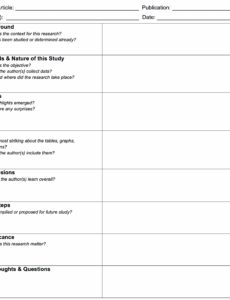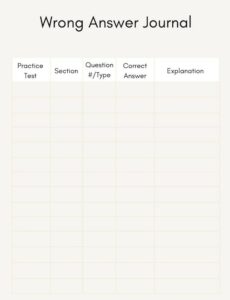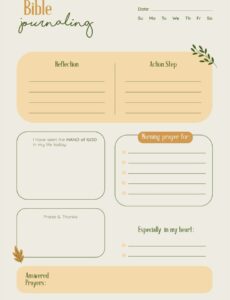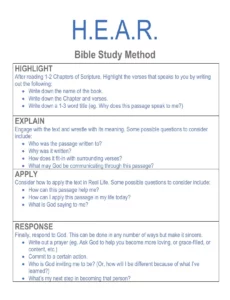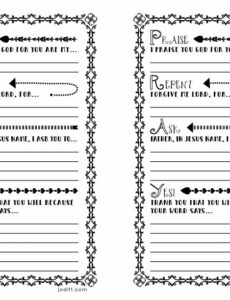Have you ever noticed how what you eat can profoundly impact your energy levels, focus, and overall emotional state? It is not just about feeling full or satisfied; the connection between your diet and your mood runs far deeper than many of us realize. From the sluggishness after a heavy meal to the burst of mental clarity after a nutritious one, our bodies and minds are constantly reacting to the fuel we provide them.
Understanding this intricate relationship is a powerful step towards optimizing your well-being. But how do you start making sense of these often subtle connections? That is where a dedicated tool comes in handy. A food and mood journal template offers a structured way to track your intake alongside your feelings, helping you uncover patterns and gain valuable insights into your personal physiology.
Why Keeping a Food and Mood Journal Can Transform Your Well-being
Embarking on a journey with a food and mood journal is more than just logging what you eat; it is a profound act of self-discovery. By consistently noting your meals, snacks, and beverages alongside how you feel, you begin to build a personal map of your body’s unique responses. This process helps you move beyond guesswork, allowing you to identify specific foods or eating habits that either lift your spirits and sharpen your focus or, conversely, leave you feeling drained, irritable, or anxious.
The science behind this connection, often referred to as the gut-brain axis, is becoming increasingly clear. Our gut health plays a significant role in producing neurotransmitters like serotonin, which heavily influence mood. Nutrient deficiencies, blood sugar imbalances, and even food sensitivities can manifest as mood swings, fatigue, or difficulty concentrating. Without a systematic way to track, these symptoms might be dismissed as everyday stress, missing the dietary root cause.
This personal logging empowers you to take control. Instead of feeling like your moods are unpredictable, you start to see the threads connecting your food choices to your emotional landscape. This awareness is incredibly liberating, enabling you to make informed decisions about your diet. You are no longer a passive recipient of your body’s reactions but an active participant in shaping your health and happiness.
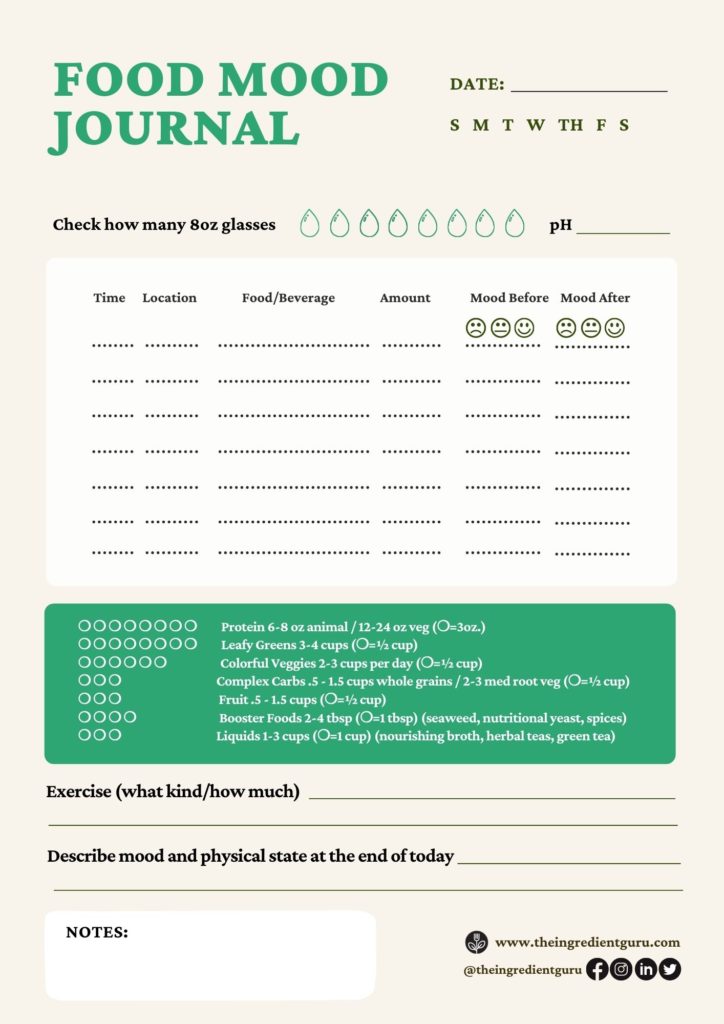
Over time, you might discover surprising insights, like how a certain type of breakfast consistently boosts your morning productivity, or how afternoon sugar spikes lead to an evening slump in mood. This meticulous record-keeping fosters mindfulness around eating, encourages healthier habits, and provides objective data to share with healthcare professionals if you are seeking further guidance on specific health concerns.
Key Benefits You’ll Experience
- Identify problematic foods or ingredients that may trigger adverse physical or emotional reactions.
- Discover energy-boosting and mood-enhancing foods that support your vitality.
- Track hydration and sleep patterns to understand their impact on your daily well-being.
- Improve your gut health awareness by noticing how different foods affect digestion.
- Reduce emotional eating by recognizing triggers and developing healthier coping mechanisms.
- Enhance mindfulness around your eating habits, leading to more intentional and nourishing choices.
How to Effectively Use Your Food and Mood Journal Template
Starting your food and mood journal is simple, but consistency is key to unlocking its full potential. Remember, this is not about strict dieting or perfection; it is about observation and understanding. Approach it with curiosity rather than judgment. The goal is to gather data about yourself, not to adhere to a rigid set of rules from day one. Just a few minutes each day can yield a wealth of information over time.
When recording your food intake, be as specific as possible. Note down not just the meal, but also the main ingredients, approximate portion sizes, and even how it was prepared. Do not forget drinks, including water, coffee, tea, and any sugary beverages. The more detail you provide, the clearer the picture will become when you look back at your entries. Include the time you ate to track how long after consumption your moods might shift.
For tracking your mood, try to be descriptive beyond just “good” or “bad.” Use a range of emotional words like “energetic,” “sluggish,” “focused,” “anxious,” “irritable,” “calm,” or “joyful.” You might even consider using a numerical scale (e.g., 1 to 10) to rate the intensity of your mood or energy levels before and after meals. This quantitative approach can help you spot trends more easily.
Beyond food and mood, consider including other lifestyle factors that might influence your well-being. Sleep duration and quality, exercise routines, stress levels, and even significant events of your day can all play a role. These contextual details can offer a more holistic understanding of your overall health and help you identify external factors alongside dietary ones that affect how you feel. A comprehensive food and mood journal template will have space for all these elements.
What to log daily:
- Time of Meal/Snack: Record when you consume anything.
- Food and Drink Consumed: List all items, including water and beverages.
- Portion Size: Estimate if an exact measurement is not feasible.
- Your Mood Before and After Eating: Use descriptive words and perhaps a numerical rating.
- Energy Levels: Rate your energy on a scale (e.g., 1-10) throughout the day.
- Symptoms: Note any physical sensations like bloating, headaches, or digestive discomfort.
- Sleep Quality and Duration: Track how many hours you slept and how refreshed you feel.
- Hydration: Keep a tally of your water intake.
- Stressors: Briefly note any significant events or feelings of stress you experienced.
Embarking on the journey of keeping a food and mood journal is a profound act of self-care. It provides you with a personalized map, guiding you towards a deeper understanding of your body’s unique signals and responses. This consistent practice fosters a greater sense of mindfulness and empowers you to make conscious choices that truly nourish both your physical and emotional well-being.
By simply taking a few moments each day to record your observations, you are laying the groundwork for sustainable positive change. This valuable tool is not just about tracking; it is about listening to your body, honoring its needs, and ultimately cultivating a healthier, happier you. Start your journey today and discover the powerful insights waiting to be revealed.
